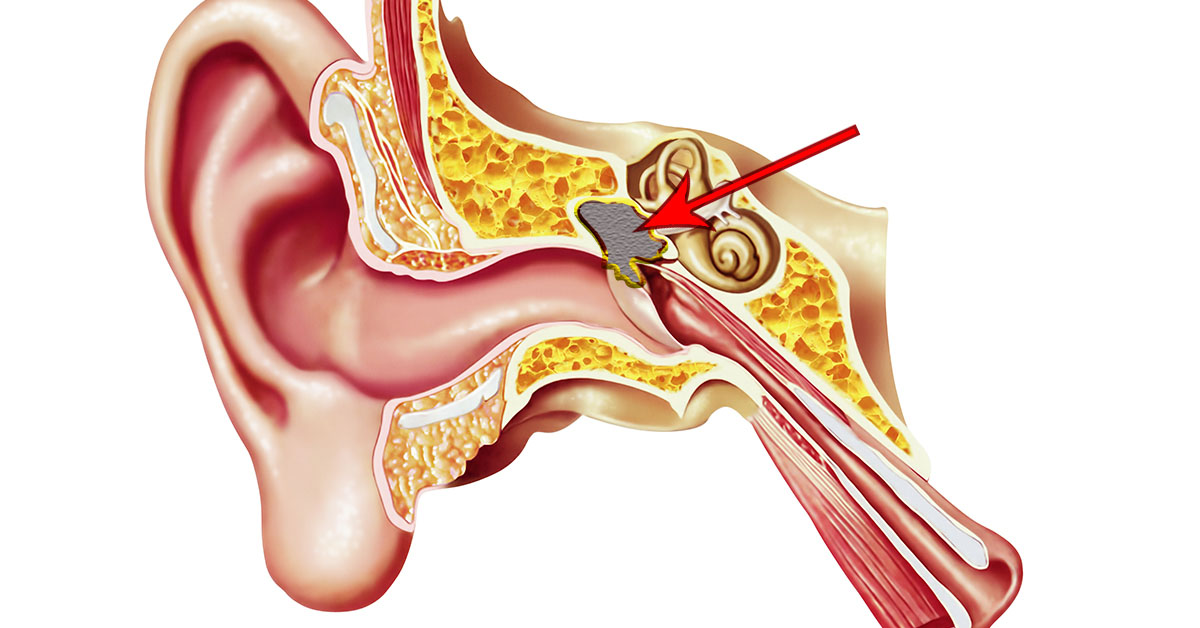
What is Cholesteatoma?
Cholesteatoma is a skin growth or cyst that grows and develops within the middle portion of your ear. While the skin growth or cyst is noncancerous, it can destroy healthy tissue and cause issues within the ear.
Causes of Cholesteatoma
When a cyst or skin growth within your middle ear (typically just behind the eardrum) sheds layers of old skin, the dead skin cells begin to build up and accumulate. If the growth increases in size too much, it can damage the delicate bones and skin of the middle ear. Common causes of a cholesteatoma forming within your middle ear include the following:
- Repeated or chronic ear infections.
- Colds, allergies, or sinus infections.
- A malfunctioning or abnormality of the eustachian tube.
If pressures within the middle ear are not equalized properly due to the eustachian tube not opening as it should, a vacuum (negative pressure) effect can occur behind the eardrum, causing the eardrum to retract into your ear further.
The retraction of the eardrum forms a pocket, which then turns into a skin growth or cyst. As the cyst's dead skin cells shed within the middle ear, they can accumulate, form a cholesteatoma, and develop an infection.
Symptoms and Diagnosis of Cholesteatoma
When a cholesteatoma is in its beginning stages, symptoms are usually mild. However, as the cholesteatoma develops, symptoms will worsen, causing additional issues within your ear. The first signs of a cholesteatoma are usually a foul smelling fluid draining from your ear. As the cholesteatoma grows, you may begin to feel a buildup of pressure or constant pain within your ear. If the cholesteatoma becomes large enough, it may even negatively affect your ability to hear sounds. In the event the cholesteatoma goes unchecked, it can cause permanent hearing loss in the affected ear, along with the feeling that you're losing your balance (vertigo).
If you're experiencing these symptoms, visit your ENT specialist as soon as possible to address the cholesteatoma and the potential lasting effects. To properly diagnose your cholesteatoma, your ENT specialist will usually examine the inside of your ear using a device that can identify if there are signs of a cyst. You may also receive a CT scan to get a better view of the inside of your ear and skull.
Treatments for Cholesteatoma
Cholesteatomas generally do not heal on their own and must be surgically removed, as they can continue to grow causing additional issues within the ear or face. Prior to surgical removal, your ENT specialist will likely prescribe antibiotics and/or medicinal ear drops to reduce swelling and facilitate drainage of the ear. Surgery for removal of cholesteatomas is usually an outpatient procedure with use of general anesthesia.



